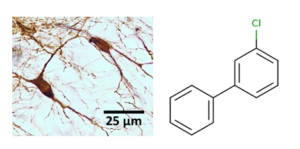Emily N. Hilz, PhD
ehilz@utexas.edu
Complete Bibliography
The focus of my research is understanding of the effects of sex steroid hormones and their modulation by common chemical compounds (e.g., endocrine disrupting chemicals (EDCs) or hormonal contraceptives) on the brain and behavior. The organizational influence of sex steroids along with the dramatic changes in their availability throughout the lifecycle has profound effects beyond the control of reproduction: I am interested in how synthetic compounds mimic endocrine function to alter the brain and lead to mood, attention, and/or learning disorders.
I received a BA in Behavior Analysis and a BAS in Psychology at the University of North Texas in 2016 and completed my PhD in Behavior Neuroscience at the University of Texas at Austin in July 2021. My graduate research showed that ovarian hormonal states in female rats enhance learning and memory for rewarding stimuli; in addition, those hormonal states increase preference for stimulants and commonly available hormonal contraceptives reduce this preference. I also studied sexual dimorphisms in attentional function and how phenotypes of disordered attention predict drug preference.
As of September 2021, I am a postdoctoral researcher in Dr. Andrea Gore’s lab and my current work combines these interests into a comprehensive project, “Endocrine disruption of the developing dopamine system”. In this work I am studying perinatal exposure to the weakly estrogenic EDC, Aroclor 1221 (A1221; a mixture of polychlorinated biphenyls (PCBs) that was banned in the 1970s for its adverse health effects but remains present in our environment to this day) in male and female rats for effects on development of the dopamine system and its related behaviors including attention function, affect, and reward-processing. This work will determine if EDCs dysregulate dopamine function (in the brain and in behavioral assays) in a sexually dimorphic manner across multiple generations, utilizing novel techniques like RNA in situ hybridization (RNAscope) and reduced representation bisulfite sequencing (RRBS) to colocalize estrogen receptor and dopamine cell mRNAs and deter mine epigenetic markers of DNA methylation, respectively. In addition, I research dopaminergic cell quantity with immunohistochemical assays and measure gene transcription with qPCR.

(Left) Micrograph of dopamine cells (tyrosine hydroxylase IHC) in the female rat midbrain. (Right) Chemical structure of Aroclor 1221.
Selected publications:
- Hilz, EN. (2022). Methods and considerations for the use of hormonal contraceptives in rat models of neurobehavior, Frontier in Neuroendocrinology. In press.
- Hilz EN, Lewis SM, Olshavsky ME, Smith ES, Gore AC, Monfils MH, Lee HJ. (2022). Sex differences in conditioned orienting and the role of estradiol in addiction-related behaviors. Behavior Neuroscience, doi: 10.1037/bne0000484.
- Hilz EN, Olvera M, Jun DS, Chadha M, Gilette R, Monfils MH, Gore AC, Lee HJ. (2022). Hormonal contraceptives alter amphetamine place preference and responsivity in the intact female rat. Behavior Neuroscience. In press.
- Hilz EN, Agee LA, Jun DS, Monfils MH, Lee HJ. Expression patterns of Arc mRNA after renewal of appetitive behavior in female rats. bioRxiv. 2021 July. doi: 10.1101/2021.07.20.453088.
- Agee LA, Hilz EN, Jun D, Lee HJ, Monfils MH. (2021). Patterns of Arc mRNA expression in the rat brain following dual recall of fear-and reward-based socially acquired information. bioRxiv, doi: 10.1101/2021.07.20.453088.
- Hilz EN, Lewis SM, Park E, Monfils MH, Lee HJ. (2019). Extinction to amphetamine-associated cues in female rats is dependent upon conditioned orienting behaviors. Psychopharmacology, 236(1): 507-15. doi: 10.1007/s00213-018-5073-7
- Hilz EN, Smith RW, Hong JY, Monfils MH, Lee HJ. (2019). Mapping the estrous cycle to context-specific extinction memory. Behavior Neuroscience, 133(6): 614-623. doi: 10.1037/bne0000343
- Barnett MD, Hilz (2017). The Psychology of the Politics of Rape: Political Ideology, Moral Foundations, and Rape Myth Acceptance. Violence Against Women, 24(5): 545‐564. doi: 10.1177/1077801217708887

